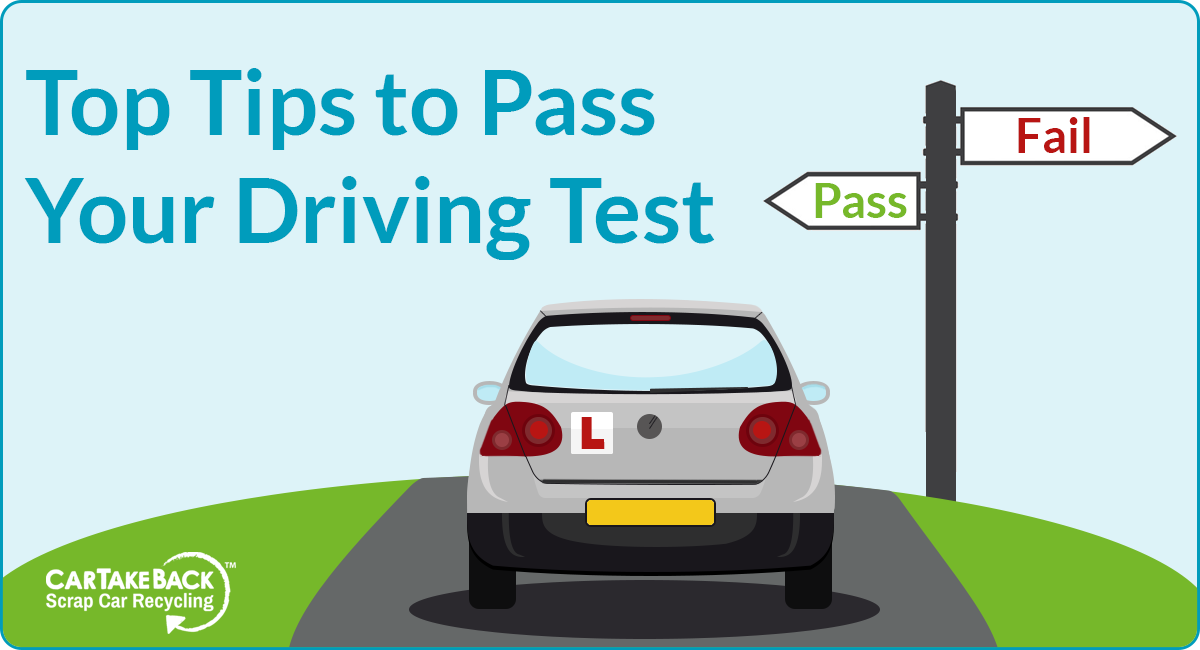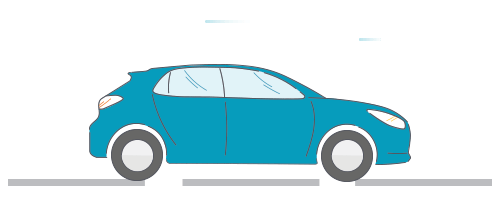Thousands of learner drivers are still waiting to get lessons and take their practical driving tests, after huge delays caused by the Covid pandemic. Earlier this year, the Irish Mirror reported that of the people who were able to take their test, four out of every ten then failed it!
With so many people still waiting for their practical tests and the passing percentage being so low, we’ve identified the 10 top reasons for failing, so you can be prepared for those tricky scenarios. We want to ensure as many of you as possible pass your test first time after such a long wait.
Here’s what learner drivers can do to make sure they don’t make common mistakes and pass their driving test with flying colours!

How to make sure you don’t make these mistakes: At a junction, take your time and approach at a suitable speed. We know there’s a lot to think about, but the classic learner mantra “mirror – signal – manoeuvre” will help! When it comes to changing lanes, you may have remembered to signal and check your mirrors, but the often-missed procedure is to check your blind spot, and that means a full turn over your shoulder, not a quick glance. Observations are often the fault recorded at roundabouts and during manoeuvres such as reverse parking. People are concentrating so hard on positioning they forget to observe correctly.

Advice for avoiding this typical learner driver error: You should already be mindful of road markings, which will help you stay in the centre of the lane, and on unmarked roads you should stay aware of your distance to the edge of the road. A simple but effective tip is to look ahead as you drive, rather than focussing on the road immediately in front of you, which should keep your direction and positioning smooth.
When it comes to positioning for turning right at a junction, you just need to remember there are other people using the road and taking a different route to you! Ensure you position your car to the right side of the lane when you approach to turn right.

How to avoid these serious mistakes in your RSA driving test: Keep your focus as you’re approaching any traffic lights. If they’ve been green for a long time you can anticipate that they may well change, don’t take any risks, or accelerate through a light change.
When you are going to have to stop, don’t do a rolling or incomplete stop. Slow down in good time and stop your car completely behind the demarcation line. While waiting at a red light, don’t lose your concentration and be ready for a smooth set-off.

A tip to ensure you don’t receive a fault on your test: If you’ve had formal driving lessons, you should be well practised at this, but remember to keep both hands on the wheel – preferably at the quarter to three position (advice used to be ‘10 to 2 o’clock’ but the adjustment has been made for safe air bag deployment). Whenever you make a turn, be sure you feed the wheel firmly through your hands back into position rather than letting it spin.

To ensure you avoid these common faults: Simply stick to the methods you’ve been taught in your driving lessons! If you are a new leaner driver then you are unlikely to make mistakes such as riding the clutch or putting the car in neutral coming into a stop – they tend to be bad habits that seasoned drivers have! However, common faults for learners tend to lie in gear changing and breaking. Try to stay relaxed, don’t skip gear changes and ensure you are releasing your clutch between those gear changes. Take the time to think about the gear you need to be in to ensure your car doesn’t strain and when you do brake, do so smoothly.

How to ensure you pass this part of your test: Go back to your theory knowledge and ensure you know what road signs mean so you can identify a sign swiftly and confidently. When you see a sign, react in plenty of time and in a safe manner.

Making sure you don’t tot up multiple minor faults: As we advised for road signs, we also suggest you review your knowledge of road markings. When you are out on the road, ensure you read the road ahead, looking out for any changes in road markings and drive accordingly. Common faults include entering yellow boxes and crossing lines at traffic lights, so make sure you are reading the road ahead and not making last minute decisions.

Obvious, but necessary advice for passing your test: While you shouldn’t be hesitant, you must ensure you’ve checked every possible direction before moving off in a test scenario, and of course in your day-to-day driving. It’s essential to yield to the vehicles that have right of way and to check all your mirrors and your blind spot before moving the car and to be seen doing so! You’ll be assessed on the correct timing of checking your blind spot, which happens five times during your test. As you may have guessed by now, this is a key procedure to practice!

Simple advice to avoid these driving mistakes: While many of our tips have included ‘taking your time’ to run through observations and correct driving procedures, it is important not to hesitate beyond that. Pay attention to the speed limits (you may well know the area where you are going to be tested and can familiarise yourself with the local speed limits in advance) and as long as there are no hazards on the road, you should be driving at or near those limits.
Drive confidently on roundabouts, pulling away from and crossing junctions, and particularly if you’re required to over-take. It’s not safe to drive excessively slowly and when you’ve carried out all your observations correctly, as you will have after all this advice, you are safe to maintain progress on the straight and show your assessor you are a capable driver.

How to avoid a major fault on your driving test: While it’s difficult in a test scenario, try to stay calm. Stalling the car doesn’t necessarily lead to a fault. Re-set yourself and the car! Re-start the manoeuvre calmly and do all the necessary checks to be absolutely sure it’s safe before moving off. The same applies when you carry out reverse and turnabout manoeuvers – stay calm and follow all procedures and observations as you’ve practiced.

Remember, stay calm and confident – if you know your theory and you’ve had enough time on the road, you can do this!
If you are reading this on behalf of a learner driver, or it’s just a long time since you passed your test, you might like to read our blog on What Makes a Good Driver and see if you need to review your own driving skills!
If you learnt to drive in an old banger and it’s time to get a new motor, find our how much your learner wheels are worth with our instant quote service.




